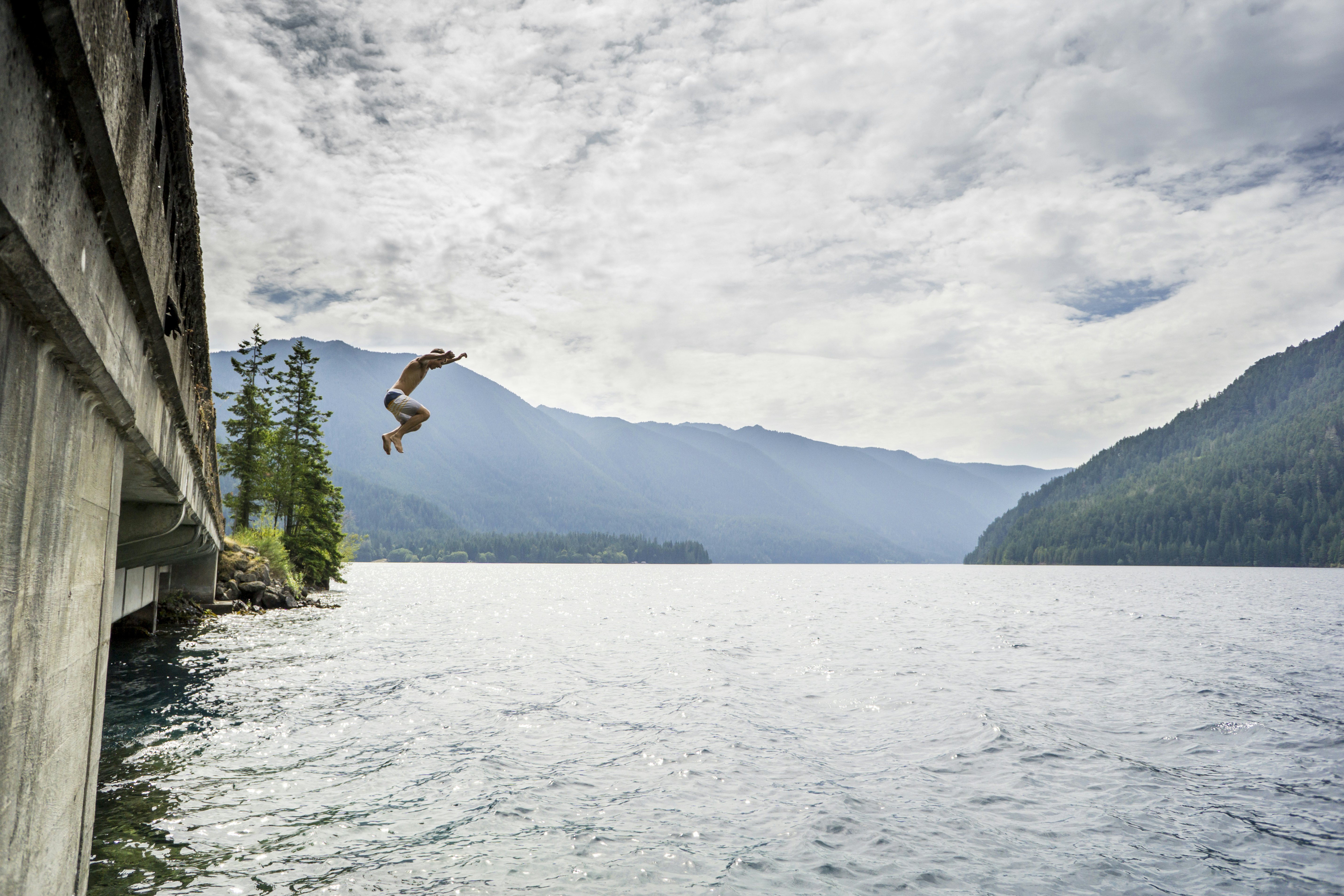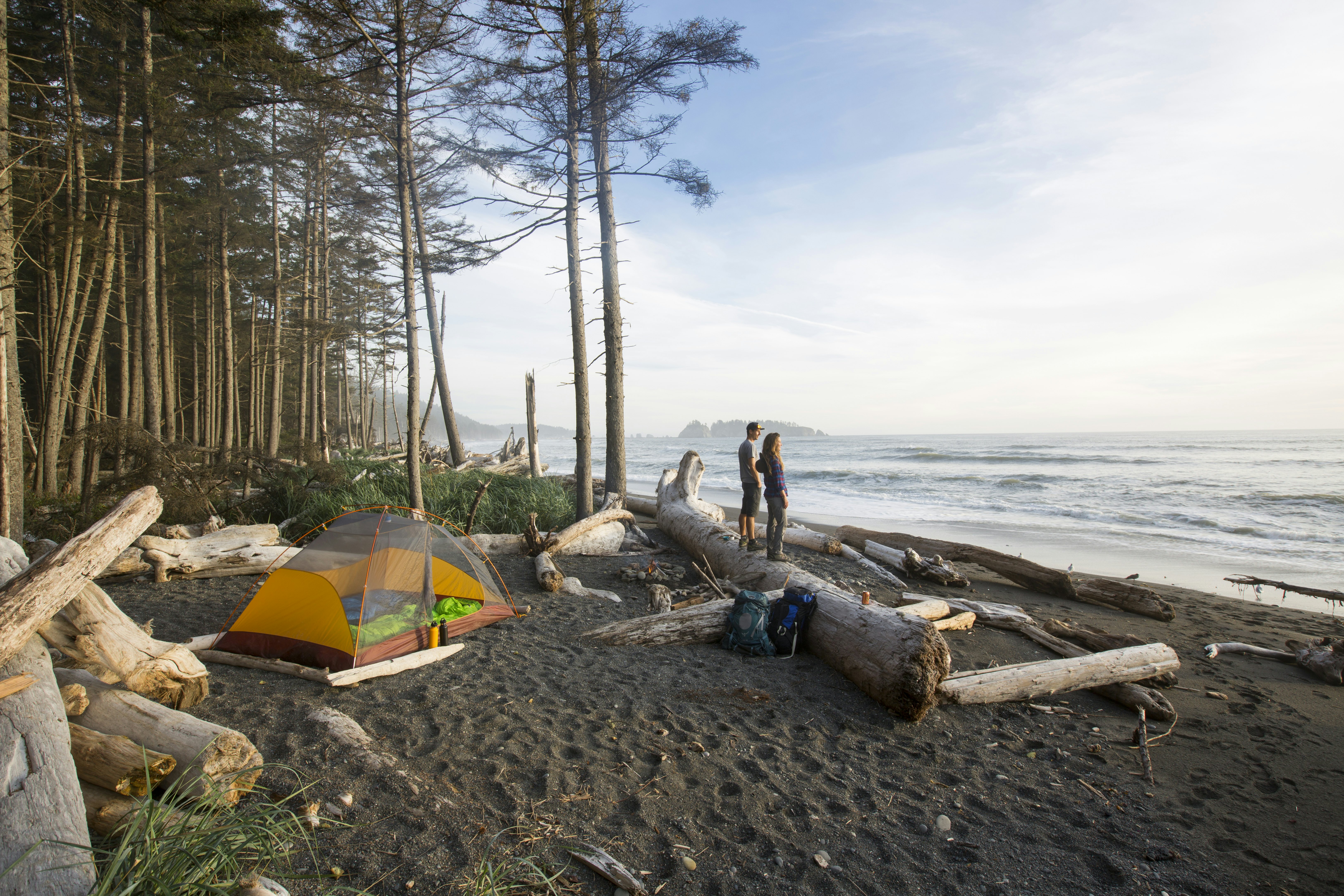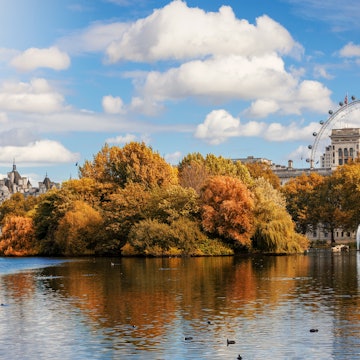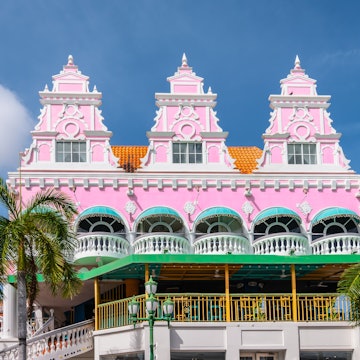

Lake Angeles. Danita Delimont on Offset/Shutterstock
Green is the overwhelming color in Washington's Olympic National Park. From dazzling emerald to muted sage, you’ll detect a hundred shades in the wet, mossy confines of the Lower 48’s most northwesterly national park, where 1000-year-old trees guard the finest tract of old-growth rainforest in the US. Playing a noble supporting act are a muddle of heavily glaciated mountains, a trio of handsome lodges and a couple of rustic hot springs.
Venture here if you like rock hopping on stormy beaches, paddling across windy lakes and hiking beneath drippy trees, with just some bears and elk for company. The park is also home to a small ski station, tide pools, archaeological sites, sea stacks and a dark, eerie sylvan environment that has inspired a mini library of vampire books.
New visitors to Olympic can find all you need in this guide to decide when to go, what to see and how to get around one of the most stunning parks in Washington.

When should I go to Olympic National Park?
Welcome to one of the wettest places in the US! Rain, and its avoidance, is a primary consideration for travelers scheduling when to visit Washington state. The Hoh Rain Forest gets nearly 130in of precipitation a year. Summer, between May and September, is the driest time, with July logging an average of only nine rainy days. This is also when most of the park’s facilities are open and services are available, from campgrounds to ranger-led hikes. (Due to staffing cuts, the National Park Service is stretched this year. Travelers can expect longer wait times, fewer services and the potential closures of certain areas.)
The winter season usually runs from late November to late March, with snow activities centered around the small ski station at Hurricane Ridge. If you hate crowds, January is the quietest (and wettest) month, while August (with over half a million visitors) is the busiest. Prices don’t fluctuate much in the park itself. In the surrounding communities, winter and the spring and fall shoulder seasons work out slightly cheaper.
How much time should I spend in Olympic National Park?
You could easily spend four or five days working your way around Hwy 101, the Olympic’s unofficial ring road, with overnight stops in Port Angeles, Lake Crescent, Forks and Lake Quinault. If you’re planning on exploring the park’s extensive backcountry on longer hikes along the Washington coast or in the roadless interior, bank on putting aside a week or even two.

Is it easy to get in and around Olympic National Park?
Getting to the park is relatively easy due to its proximity to Seattle. It’s just over two hours by car to the eastern park entrance at Staircase and 2.5 hours to Port Angeles in the north. Seattle–Tacoma International, 15 miles south of downtown Seattle, is the nearest airport.
It’s also fairly simple to get to Port Angeles directly from Victoria on Vancouver Island in Canada. The Black Ball car ferry runs four times a day in either direction in the summer and twice in the winter. The journey time is 90 minutes.
The park is encircled by the scenic and well-maintained Hwy 101, with several more paved roads penetrating the interior, where they dead-end at Hurricane Ridge, Hoh Rain Forest, Lake Quinault, Sol Duc hot springs and Staircase.
While public buses exist, they are slow and indirect. You’ll need to change buses between the different counties of Clallam, Jefferson, Mason and Grays Harbor.

Top things to do in Olympic National Park
Climb a rugged path up Mt Storm King
Arguably the park’s most rewarding day hike is the 4.1-mile round-trip climb to the top of Mt Storm King, whose narrow, craggy summit towers grandly above the timberline overlooking the blue-green waters of Lake Crescent and the Strait of Juan de Fuca. The trail starts from a lakeside ranger station and ascends steeply through forest for just under 2 miles, with the last section necessitating a challenging scramble over rough rock (ropes are provided for assistance). It’s well worth the sweat.
During winter months, the upper sections of the trail are often covered in snow and ice, making the terrain more hazardous. Experience with winter hiking is important, or stick to the trail between May and October.
Appreciate ancient trees in the Hoh Rain Forest
For one of the most quintessential park experiences, immerse yourself in the greenest, wettest and oldest temperate rainforest in North America. Hoh, with its giant trees draped in spongy moss, is a jumble of foliage humming with wildlife. The area has its own visitors center and several short interpretive trails, including the 0.8-mile Hall of Mosses trail, where giant trees draped in green moss create an otherworldly atmosphere. In the summer, rangers lead nature walks and presentations on the rainforest.
Hike 3.2 miles up the Hoh River Trail from the visitors center above Mt Tom Creek Meadows. Find a Sitka spruce tree that you can walk through. That’s the entrance to One Square Inch of Silence, an area with the least amount of human-made noise pollution anywhere in the country.
During peak seasons, the parking lot often reaches capacity early in the day. Arrive before 10am or after 5pm to increase the likelihood of securing a spot.
Observe the forces of nature on Ruby Beach
First designated in 1938, Olympic National Park was extended in 1953 to include a narrow coastal strip that stretches from Ozette in the north down to Kalaloch in the south. Of the coast’s stormy collection of beaches, Ruby Beach, characterized by its bruised clouds, eroded sea stacks and piles of washed-up tree logs, is the easiest to reach from Hwy 101.

Feel the wind in your hair at Hurricane Ridge
The most visited enclave in Olympic is located near the urban hub of Port Angeles. Hurricane Ridge is home to a small family-orientated ski station (a rarity in US national parks), windy roadside lookouts, flower meadows, mountain goats and superb views into the park’s uninhabited interior. Trails, both short and long, crisscross the subalpine surroundings. While you can drive to the main area here, be sure to check for road closures and equip your tires with chains.
From late November through March, the road to Hurricane Ridge opens only on weekends, weather permitting, and is subject to closures during storms or heavy snowfall.
Go stargazing
The best places to stargaze are Hurricane Ridge, Lake Crescent and Kalaloch Beach, where there are open skies and minimal light pollution. In the free Hurricane Ridge Astronomy Program, a master observer or volunteer dark ranger points out planetary nebula M57 (also known as the Ring Nebula) and M31 (the Andromeda Galaxy). Remember to bring binoculars, a red flashlight, water, gloves, a hat and a jacket, and to dress in layers.
Soak in hot springs at Sol Duc
The most accessible and developed of the park’s hot springs, Sol Duc Hot Springs Resort sits at the end of a 14-mile-long road and funnels its recuperative waters into a quartet of tiled outdoor pools. If you’re not a hotel guest, you can pay an entrance fee to use one of the three hot mineral pools.
Massages are also available, and if you’re truly besotted, there’s a rustic cabin resort, campground and restaurant dabbling in Pacific Northwest cuisine. A handful of trails weave around the area's bubbling creeks, a pretty lake and a waterfall.
Photograph tide pools and sea stacks
Olympic National Park protects about 73 miles of coastline in partnership with three national wildlife refuges and the Olympic Coast National Marine Sanctuary. The tide pools are best at Kalaloch’s Beach 4, Rialto Beach’s Hole-in-the-Wall, Second Beach, Third Beach and Ruby Beach. When the tide rolls back, you might find anemones, wolf eels, barnacles, clams, sea snails, sponges, starfish, hermit crabs and seaweed competing and cooperating in pools, alcoves and basins of rocks
The best time is during a “minus tide” that’s lower than normal. Look for tides lower than 1ft.

My favorite thing to do in Olympic National Park
The Quinault Valley in the park’s interior is one of my favorite places to linger for a day or three. The area is anchored by the rippling Lake Quinault, upon whose shores stands the handsome Lake Quinault Lodge, a historic hotel built in rustic style in the 1920s – a good decade before the national park was created.
I like Quinault's litany of indoor and outdoor things to do, depending on your mood and how energetic or lazy you feel. This is an ideal base for long- or short-distance hikes, admiring giant trees, kayaking or merely relaxing in a well-worn leather armchair beside the lodge’s spirit-reviving fire.
How much money do I need for Olympic National Park?
In common with many national parks, you can expect the prices for items such as food to be a little more expensive than the surrounding towns, plus there are fewer options to find cheaper substitutes. Balancing that out, many of the park’s outdoor activities – including hiking, wild swimming and wildlife watching – are free or almost free.
Park entrance fee: US$15–30
Campground per night: US$15–24
Basic room for two per night: US$150–250
Half-day kayak rental: US$45
Hot springs entrance fee: US$18
Coffee: US$3–4
Dinner entrée at Lake Quinault Lodge: US$26–48

Book a campsite
There are 14 front-country campgrounds in the park; half take reservations, and the other half are first come, first served. Five campgrounds are suitable for tents only, and two have electrical hookups and water.
Backcountry campers must purchase a permit for US$6 and subsequently pay US$8 per person per night. Sites must be booked in advance and are available from May 15 through October 15. There are 120 backcountry campgrounds in the park, each able to accommodate between six and 12 people.
Locate the visitors centers
The park’s main visitors center is situated on the southern edge of Port Angeles and is open daily year-round. There’s a Wilderness Information Center next door. There’s another visitors center in the Hoh Rain Forest with more limited off-season hours. The visitors center at Hurricane Ridge burned down in 2023, and the park is currently using temporary trailers to provide visitors with support and restrooms
Watch for changeable weather
The weather is always fickle in this neck of the woods. Dress in layers, particularly in the mountains, and bring a waterproof jacket and leggings. Summer months have the most reliable weather, and that’s also when most of the campgrounds are open.
Pick hiking trails that suit your skill and interest
Hiking in Olympic National Park can take you from mist-shrouded rainforest to alpine peaks. Beginners will enjoy the easy trails in the Hoh Rain Forest like the Hall of Mosses. The nearby Spruce Nature Trail (1.2 miles) is another gentle loop offering scenic views of the Hoh River.
For those looking for a moderate challenge, Hurricane Ridge is a bit more adventurous. The Hurricane Hill Trail (3.2 miles) is a popular option, while more seasoned hikers might traverse the Klahhane Ridge Trail, a 7.6-mile round trip from the visitors center.
If waterfalls are more your style, head to the Sol Duc Valley. Here, the easy 1.6-mile Sol Duc Falls Trail rewards hikers with a dramatic cascade plunging into a mossy gorge. For a longer adventure, try the 11-mile Lover’s Lane loop, which takes you along a winding route by rivers and through quiet woodlands.
For a coastal hike, Rialto Beach's Hole-in-the-Wall trail (3.3 miles, round trip) is best done at low tide.
Visit a significant archaeological site
Outside the national park boundary in Neah Bay, the Makah Museum is well worth an hour or two of your time, offering an unparalleled glimpse into one of the oldest and best studied Native American archaeological sites in the US.
















